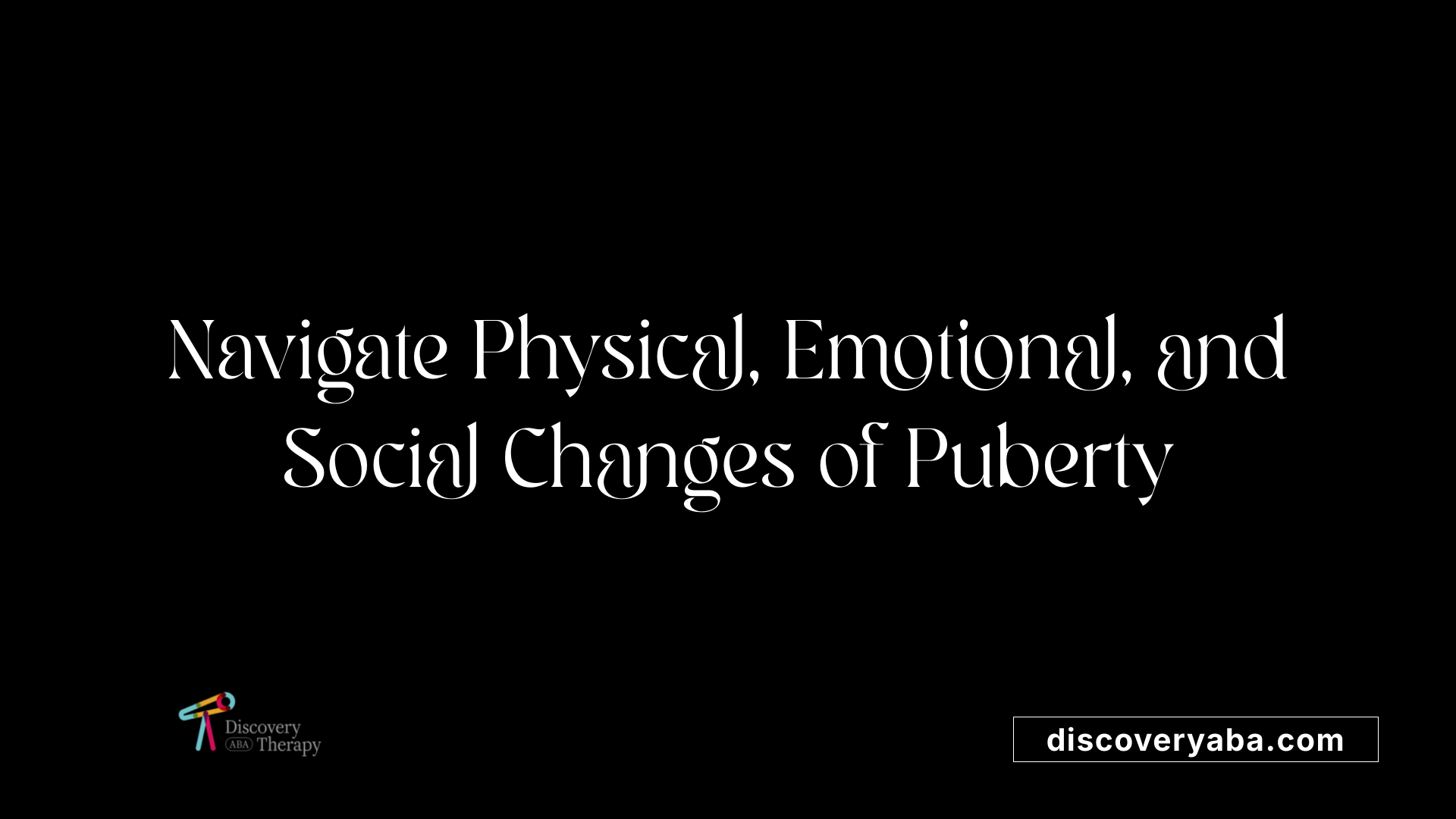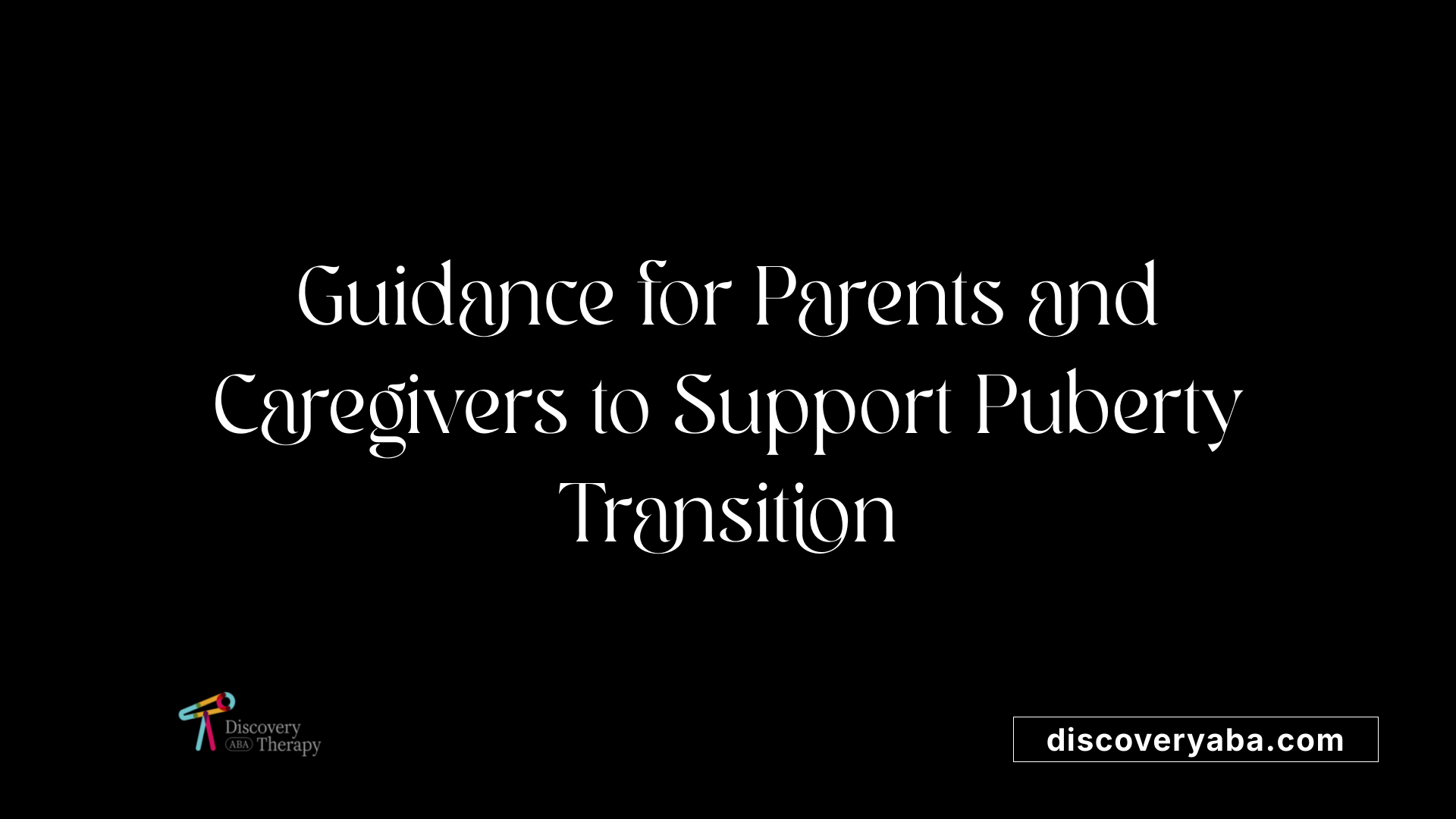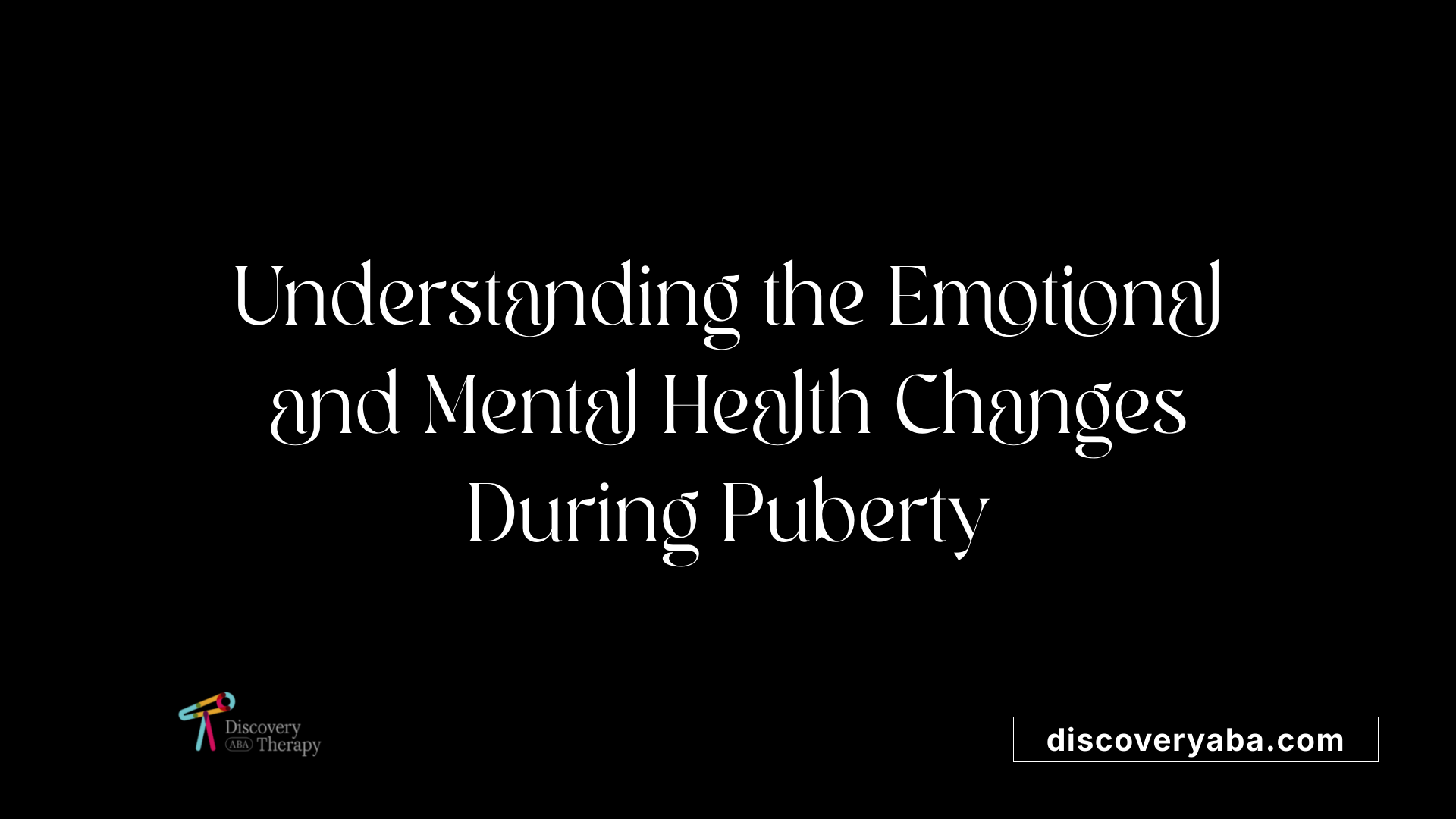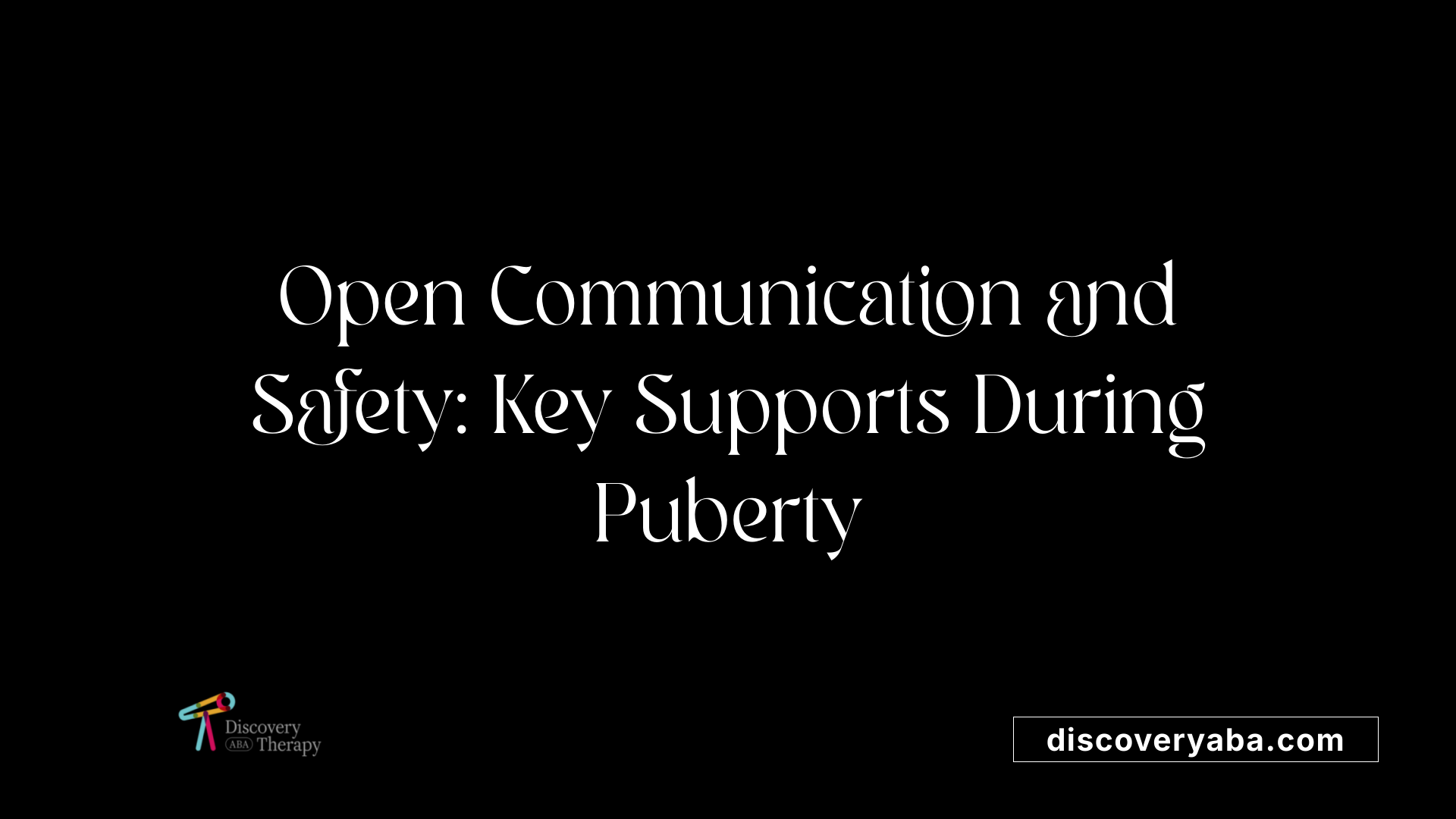Supporting children during puberty with behavior supports
Navigating Puberty: Strategies for Supporting Behavioral and Emotional Development

Understanding the Journey Through Puberty
Puberty is a critical developmental phase characterized by multisystem changes that influence a child's physical, emotional, and social well-being. Supporting children during this time requires careful planning, open communication, and tailored behavior supports to foster resilience, healthy habits, and positive social relationships. This article explores the complexities of puberty and provides comprehensive strategies for parents, educators, and caregivers to effectively support children through this transformative stage.
Understanding the Spectrum of Changes During Puberty

What are the physical, emotional, and social changes during puberty?
Puberty marks a period of rapid development across physical, emotional, and social domains. Physically, children experience growth spurts, development of secondary sexual characteristics such as breast growth in girls, penis and testicular growth in boys, and the emergence of pubic and underarm hair. Hormonal shifts—namely increased estrogen and testosterone—drive these changes and prepare their bodies for reproductive capability.
Emotionally, teenagers often encounter mood swings, heightened feelings of insecurity, and a developing sense of identity. Their brains, especially the emotional centers, develop faster than the reasoning parts, leading to increased emotional sensitivity and sometimes impulsive behavior. This phase can also bring about concerns over body image and self-esteem.
Socially, there is a marked desire for independence and stronger peer influences. Teens seek to establish their social identity through friendships and may experiment with new behaviors, romantic interests, and societal roles. These shifts can cause conflicts and increased privacy needs within families.
Understanding these interconnected changes helps parents and caregivers provide appropriate support. Maintaining open communication, normalizing body transformations, and promoting healthy habits are vital in guiding adolescents smoothly through this challenging yet crucial phase of development.
Behavioral Challenges Typical of Pubertal Development
What are common behavioral challenges faced during puberty?
Puberty brings many changes, not just physically but also emotionally and socially. During this time, adolescents often experience increased impulsivity and emotional sensitivity. This is because their emotional brain develops first, while the more rational thinking brain develops later, making it harder for them to manage intense feelings.
Many teens face issues like anxiety, depression, and eating disorders, which may increase with early puberty. These mental health challenges are often linked to the rapid physical changes they are going through, along with concerns about body image and societal expectations.
Young people also struggle with seeking independence while still needing guidance. Peer pressure and the desire to fit in can lead to risky behaviors such as experimenting with substances, early sexual activity, or social media use.
Behavioral issues like aggression, withdrawal, or difficulty paying attention at school can also surface as they grapple with these new social and emotional demands. Sometimes, these problems are exacerbated by social influences, especially online, where exposure to harmful content or cyberbullying can worsen their mental health.
Overall, puberty is a turbulent period. The hormonal and cognitive shifts make self-regulation difficult, which can lead to conflicts with parents or teachers. Recognizing these typical challenges helps caregivers provide the support, reassurance, and modeling needed for teens to navigate these years healthily.
Supporting Parents and Caregivers

How can parents and caregivers support children through puberty?
Supporting children through puberty involves more than just recognizing physical changes; it requires open, honest, and compassionate communication. Parents and caregivers can create a safe space by discussing the upcoming changes, using clear and age-appropriate language. Listening attentively to children’s questions and concerns helps them feel understood and reduces anxiety associated with rapid bodily and emotional shifts.
Normalizing these experiences is crucial. Emphasizing that every child develops at their own pace and that feeling awkward or confused is common helps alleviate unnecessary stress. It’s also beneficial to reinforce positive body image by modeling body acceptance and avoiding negative comments about appearance.
Encouraging good hygiene is another vital support measure. Teaching children about regular bathing, hair care, and the use of deodorant helps them manage physical changes like body odor and acne confidently. Providing necessary hygiene supplies and demonstrating proper practices can bolster their independence and self-esteem.
Finally, supporting emotional health by keeping an open dialogue, respecting their privacy, and seeking professional help if needed ensures children feel safe and supported during this significant developmental milestone. Parents who adopt these approaches can foster resilience, confidence, and a healthy attitude toward their changing bodies and feelings.
Strategies for Promoting Positive Behaviors and Coping Skills
What strategies can help children and teenagers develop positive behaviors and coping skills during puberty?
Supporting children and teens through puberty requires a combination of nurturing relationships, consistent boundaries, and healthy habits. Building supportive relationships involves listening attentively, showing empathy, and maintaining open lines of communication. Establishing clear and reasonable boundaries helps young people understand expectations while fostering a sense of safety and stability.
Encouraging healthy lifestyle choices is essential. Ensuring children get enough sleep, eat a balanced diet, participate in regular physical activity, and limit screen time can enhance emotional resilience. These habits directly influence mood stability and self-esteem.
Active listening and creating a safe environment for teenagers to share their feelings can greatly reduce stress. It’s important for caregivers to validate emotions and address concerns compassionately.
Using positive reinforcement, such as praise and rewards, promotes good behavior. Clear rules should be established collaboratively and communicated calmly to avoid misunderstandings.
Harmful disciplinary practices like shouting or shaming should be avoided, as they can damage self-esteem and trust. Instead, setting consistent consequences and teaching problem-solving skills help children learn from their actions.
If behavioral problems persist or mental health issues surface, seeking support from healthcare professionals is vital. A GP or mental health specialist can offer guidance tailored to the child's needs.
Overall, nurturing a positive environment with supportive relationships, healthy routines, and clear expectations enables children to develop resilience and coping skills essential for navigating puberty smoothly.
The Impact of Puberty on Emotional Well-being and Mental Health

How does puberty affect emotional well-being and mental health?
Puberty is a time of significant physical, social, and emotional changes that can deeply influence a young person's mental health. As hormonal levels fluctuate — primarily estrogen in girls and testosterone in boys — mood swings and irritability can become more common. These hormonal shifts impact brain development, particularly in areas linked to emotional regulation, like the limbic system. Since this part of the brain develops earlier than the prefrontal cortex, which is responsible for impulse control and rational thinking, adolescents often experience heightened emotional sensitivity.
Early puberty or rapid physical changes can also increase the risk of mental health issues such as anxiety, depression, and eating disorders. Many teens struggle with body image concerns, social acceptance, and independence, which can lead to feelings of insecurity and stress.
Creating a supportive environment is critical. Open, honest communication about feelings, normalizing body changes, and providing mental health education reduce anxiety. Encouraging young people to seek help when needed and guiding them toward coping strategies builds resilience. Access to counseling or mental health resources fosters a sense of safety and validation, helping teens manage emotional upheaval and develop healthier self-esteem.
Communication, Safety, and Emotional Support During Puberty

How can communication and safety be supported during puberty?
Supporting communication and safety during puberty involves establishing an environment built on openness, honesty, and trust. When young people feel comfortable discussing their body changes and concerns, they are less likely to feel fear or shame.
Using language that is age-appropriate and clear helps to normalize puberty-related experiences. This includes providing accurate information about physical changes, hygiene routines, and potential safety risks. It is particularly important to discuss topics like online safety, peer relationships, and respecting personal boundaries.
Respecting a child's privacy fosters their independence and confidence. Encouraging self-expression through open conversations and active listening enhances emotional security.
Parents and caregivers serve as role models by maintaining positive attitudes about body image and health. They should also keep an ongoing dialogue, making sure their child knows they are available for support.
Guidance on social and digital environments is essential. Teaching children about safe online behaviors, recognizing inappropriate content, and understanding how to seek help when needed empowers them to navigate risks effectively.
Finally, building a respectful, trusting relationship helps the child feel valued and understood. This foundation supports their emotional resilience and overall well-being during this significant developmental stage.
Integrating Puberty Support into Education and Social Development

How can puberty support be integrated into educational plans such as IEPs?
Supporting students through puberty effectively involves including comprehensive, age-appropriate education within Individualized Education Programs (IEPs). This process should be personalized, recognizing that puberty begins at different ages for each child. Schools can incorporate structured lessons on physical, emotional, and social changes, utilizing visual aids, illustrated books, or digital tools to enhance understanding.
IEPs can also address emotional and behavioral aspects by teaching stress management techniques, helping students handle mood swings, peer pressures, and self-esteem issues. Collaboration among educators, healthcare providers, and families ensures the content is culturally sensitive, developmental-grade appropriate, and inclusive of diverse identities such as LGBTQ youth. Regular updates and adaptations to the plan support ongoing learning, fostering body positivity and social-emotional resilience, which helps students navigate puberty with confidence.
What social development and peer relationship issues are common during adolescence?
Adolescence marks a period of transformation in social development, characterized by a push for independence and identity exploration. Kids develop stronger peer connections, which play a vital role in their social skills, such as empathy, cooperation, and understanding social cues. Peer influence becomes particularly influential, affecting attitudes towards appearance, behavior, and values.
Social media expands these interactions but also introduces risks like cyberbullying, social comparison, and exposure to harmful content. Friendships may shift, and the desire for autonomy can lead to disagreements with family members, especially parents. Emotional fluctuations, such as mood swings and self-consciousness, are typical, driven by hormonal changes and social pressures. Supporting adolescents involves guiding them to build healthy relationships, fostering open communication, and establishing a safe environment for exploring their evolving social identities.
Supporting Adolescents Through Change
Navigating puberty is a complex process that demands understanding, patience, and proactive support from parents, educators, and healthcare professionals. Emphasizing open communication, developing resilience, promoting healthy habits, and providing tailored social and emotional supports are key to helping children develop into confident, emotionally balanced young adults. Integrating these strategies into family routines, educational plans, and community resources strengthens their capacity to adapt positively to this vital developmental stage, setting the foundation for lifelong well-being.
References
- Parenting children through puberty and adolescence
- Talking to Kids and Teens About Puberty
- Encouraging positive behaviour in pre-teens and teenagers: 20 tips
- 10 Tips to Support Children with Autism through Puberty ...
- Kids Health Info : Challenging behaviour – teenagers
- How To Support Your Child With Autism Through Puberty
- Puberty and Sexuality and Children with Disabilities
- [PDF] Supporting Child and Student Social, Emotional, Behavioral, and ...
- Navigating Puberty with Confidence - Kidsville Pediatrics
- Behavior Support: Preventative Strategies
Does Your Child Have An Autism Diagnosis?
Learn More About How ABA Therapy Can Help
Find More Articles
Contact us
North Carolina, Nevada, Utah, Virginia
New Hampshire, Maine
Arizona, Colorado, Georgia, New Mexico, Oklahoma, Texas
.avif)




































































































